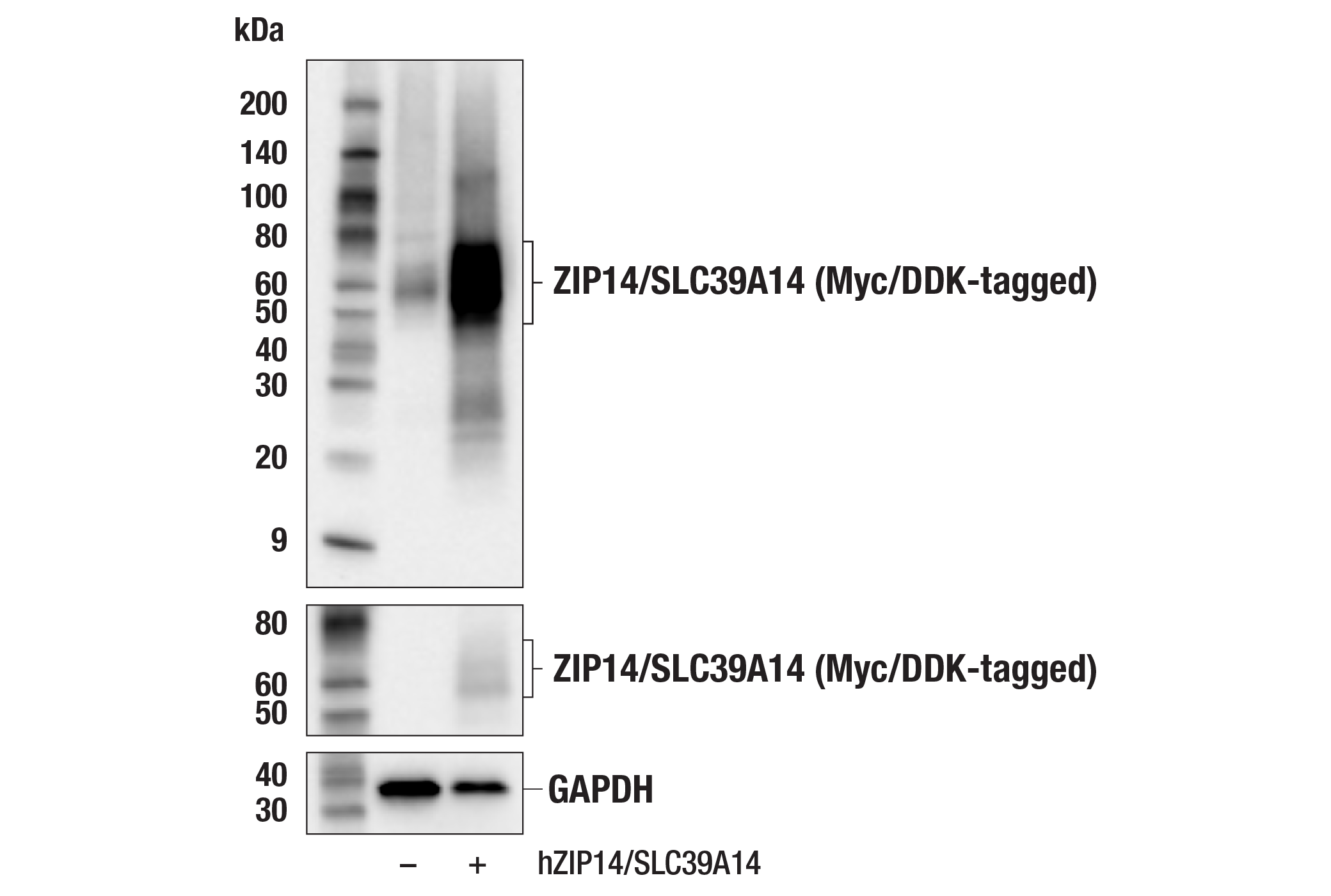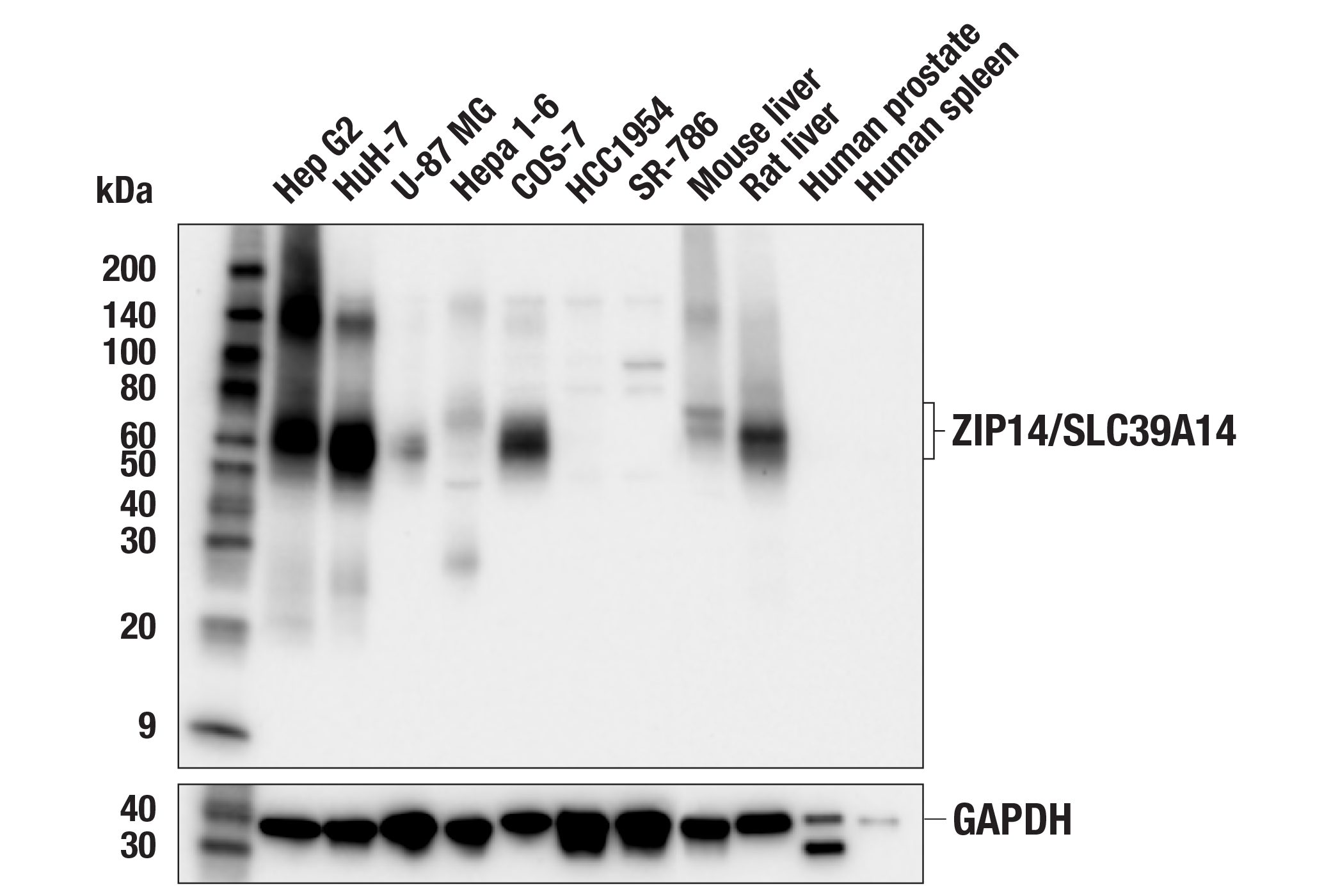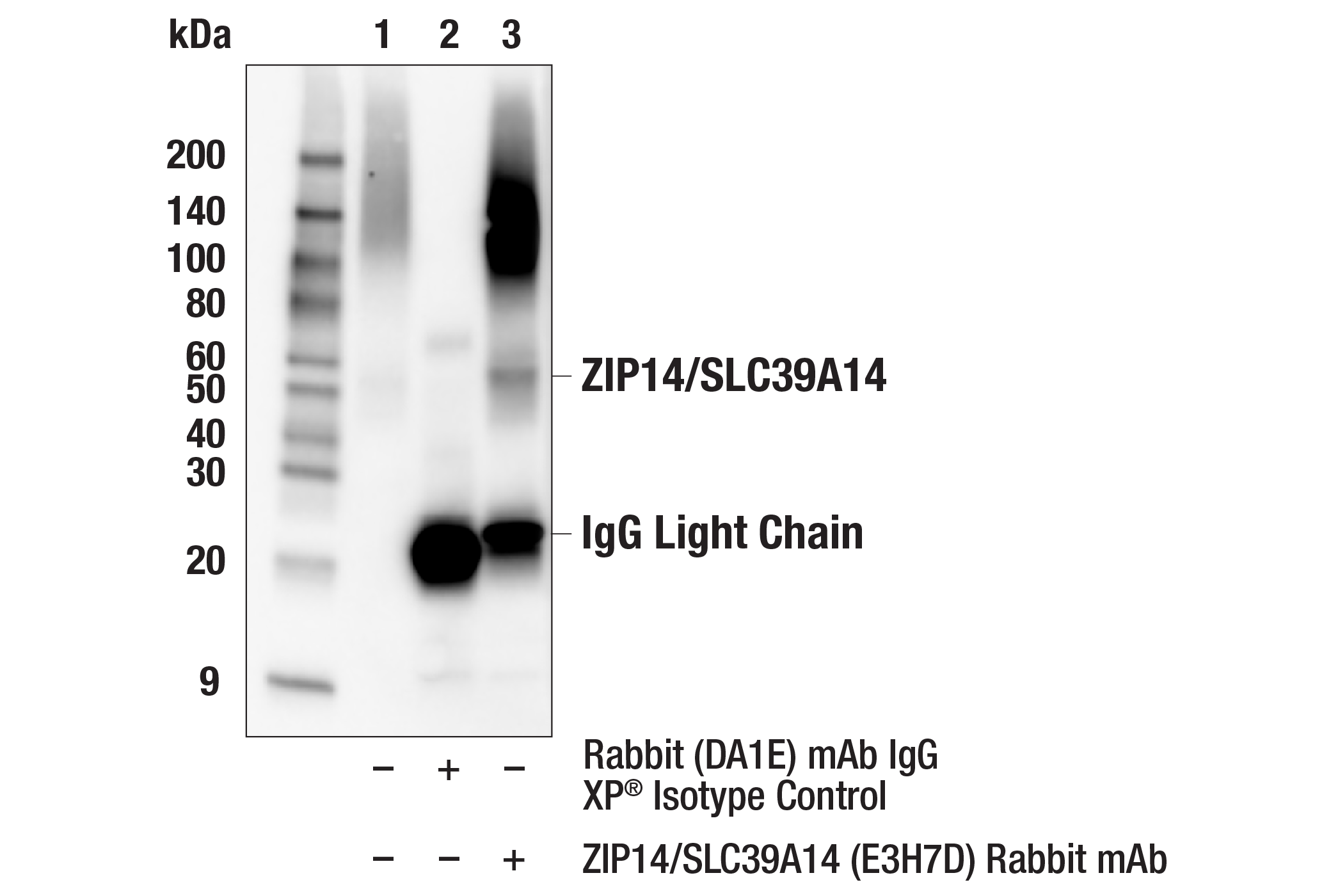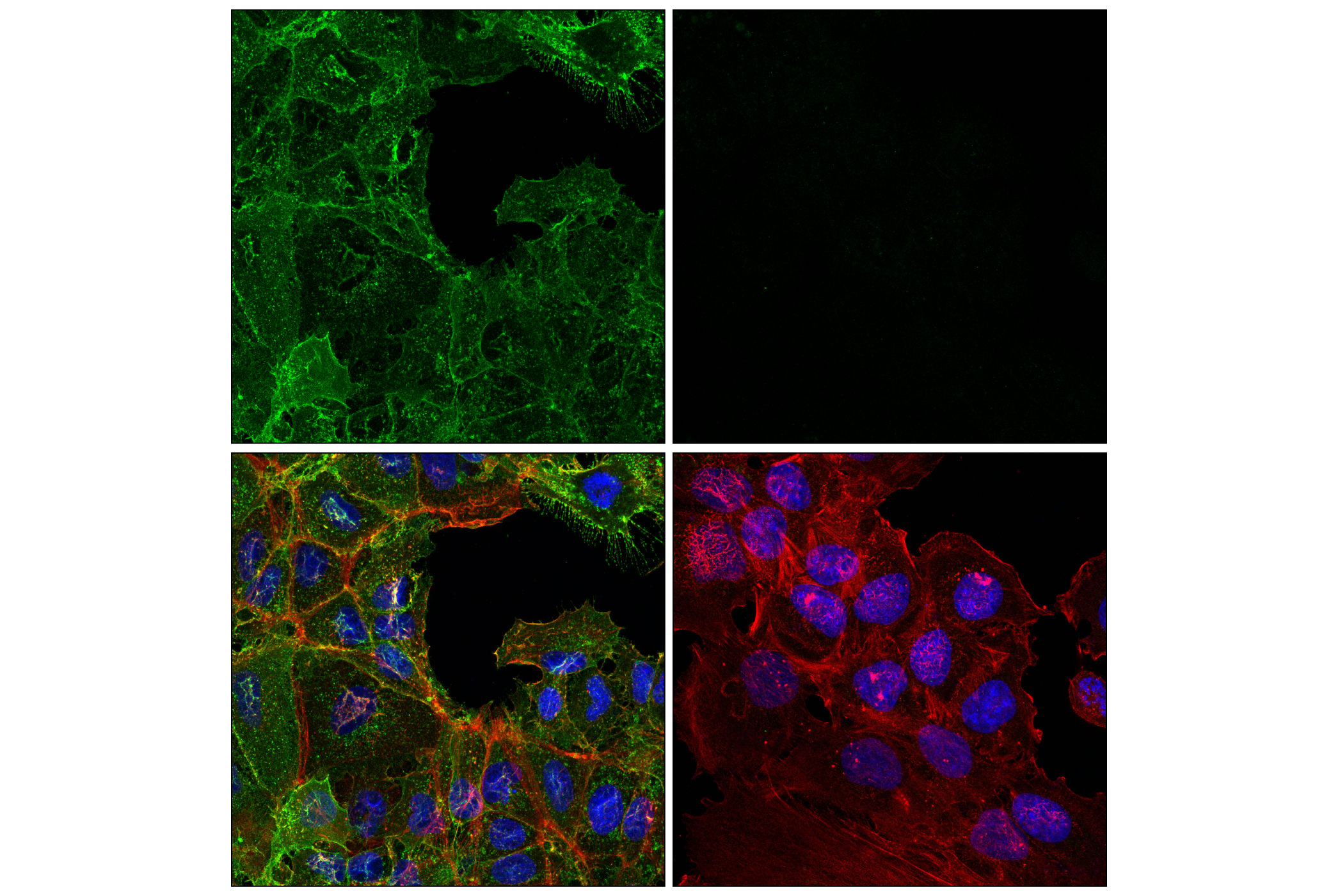WB, IP, IF-IC
H M R Mk
Endogenous
55-65
Rabbit IgG
#Q15043
23516
Product Information
Product Usage Information
| Application | Dilution |
|---|---|
| Western Blotting | 1:1000 |
| Immunoprecipitation | 1:50 |
| Immunofluorescence (Immunocytochemistry) | 1:800 - 1:1600 |
Storage
Specificity / Sensitivity
Species Reactivity:
Human, Mouse, Rat, Monkey
Source / Purification
Monoclonal antibody is produced by immunizing animals with a synthetic peptide corresponding to residues surrounding Leu282 of human ZIP14/SLC39A14 protein.
Background
Solute carrier (SLC) family member Zrt- and Irt-like protein 14 (ZIP14) is a transmembrane metal ion symporter encoded by the gene SLC39A14. ZIP14 functions as a plasma membrane transporter of zinc and manganese, and as an endosomal promoter of intracellular uptake of iron from transferrin (1). In liver, ZIP14 localizes to the basolateral membrane of hepatocytes, transporting manganese from the blood for eventual delivery to the bile duct (2). In pancreatic beta cells, SLC39A14 expression is glucose-sensitive and plays a key role in zinc-dependent insulin secretion (3).
The reported ZIP14 L441R mutation (L438R in mice) disrupts plasma membrane presentation of the transporter, causing intracellular accumulation of zinc in osteoblasts, characterized by excessive bone overgrowth (4).
SLC39A14 mutation or knockdown can cause manganese dyshomeostasis, resulting in childhood-onset dystonia-Parkinsonism (5). The activity of liver-expressed ZIP14/SLC39A14, intestinal SLC39A10, and blood-brain barrier ZIP8/SLC39A8 all contribute to manganese homeostasis during neuronal development (6,7).
- Zhao, N. et al. (2010) J Biol Chem 285, 32141-50.
- McCabe, S. et al. (2023) Comput Struct Biotechnol J 21, 2332-2338.
- Maxel, T. et al. (2019) Sci Rep 9, 8589.
- Hendrickx, G. et al. (2018) PLoS Genet 14, e1007321.
- Tuschl, K. et al. (2016) Nat Commun 7, 11601.
- Hutchens, S. et al. (2023) Am J Physiol Gastrointest Liver Physiol 325, G251-G264.
- Liu, Q. et al. (2023) J Biol Chem 299, 105078.
Species Reactivity
Species reactivity is determined by testing in at least one approved application (e.g., western blot).
Western Blot Buffer
IMPORTANT: For western blots, incubate membrane with diluted primary antibody in 5% w/v BSA, 1X TBS, 0.1% Tween® 20 at 4°C with gentle shaking, overnight.
Applications Key
WB: Western Blotting IP: Immunoprecipitation IF-IC: Immunofluorescence (Immunocytochemistry)
Cross-Reactivity Key
H: human M: mouse R: rat Hm: hamster Mk: monkey Vir: virus Mi: mink C: chicken Dm: D. melanogaster X: Xenopus Z: zebrafish B: bovine Dg: dog Pg: pig Sc: S. cerevisiae Ce: C. elegans Hr: horse GP: Guinea Pig Rab: rabbit All: all species expected
Trademarks and Patents
Limited Uses
Except as otherwise expressly agreed in a writing signed by a legally authorized representative of CST, the following terms apply to Products provided by CST, its affiliates or its distributors. Any Customer's terms and conditions that are in addition to, or different from, those contained herein, unless separately accepted in writing by a legally authorized representative of CST, are rejected and are of no force or effect.
Products are labeled with For Research Use Only or a similar labeling statement and have not been approved, cleared, or licensed by the FDA or other regulatory foreign or domestic entity, for any purpose. Customer shall not use any Product for any diagnostic or therapeutic purpose, or otherwise in any manner that conflicts with its labeling statement. Products sold or licensed by CST are provided for Customer as the end-user and solely for research and development uses. Any use of Product for diagnostic, prophylactic or therapeutic purposes, or any purchase of Product for resale (alone or as a component) or other commercial purpose, requires a separate license from CST. Customer shall (a) not sell, license, loan, donate or otherwise transfer or make available any Product to any third party, whether alone or in combination with other materials, or use the Products to manufacture any commercial products, (b) not copy, modify, reverse engineer, decompile, disassemble or otherwise attempt to discover the underlying structure or technology of the Products, or use the Products for the purpose of developing any products or services that would compete with CST products or services, (c) not alter or remove from the Products any trademarks, trade names, logos, patent or copyright notices or markings, (d) use the Products solely in accordance with CST Product Terms of Sale and any applicable documentation, and (e) comply with any license, terms of service or similar agreement with respect to any third party products or services used by Customer in connection with the Products.



